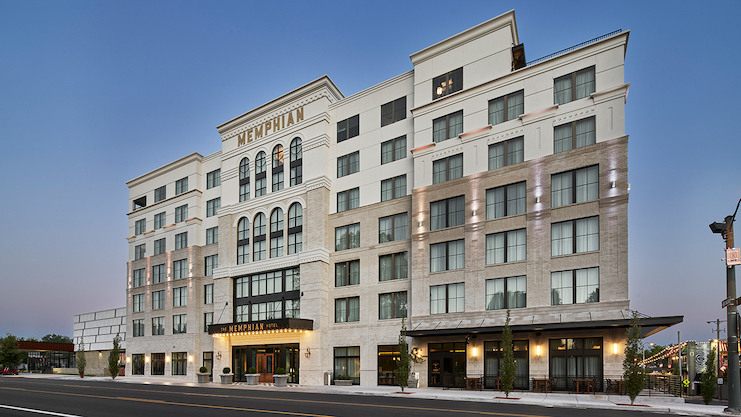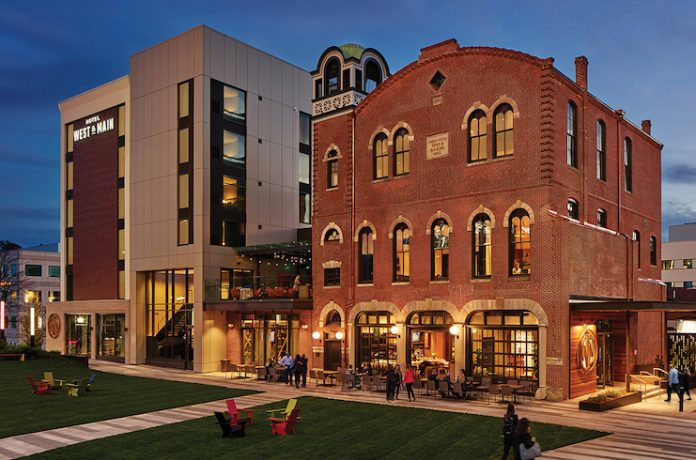The outlook for openings is promising as the U.S. hotel development pipeline is bolstered by a record-high 1,085 conversion projects in the second quarter of 2023, according to Lodging Econometrics. However, developers are still contending with inflation and high interest rates, which lengthen the timeline for some projects.
“Projects have generally slowed,” observed Kyle Hughey, CEO, Charlestowne Hotels. “Capital is a little tougher to get and [developers] are more conscious about the use of it, because it’s so costly.” By way of example, Hughey added, “We’ve had a couple of new-build projects that just got paused. The projects are not dead; they’re just going to sit tight and keep bidding it out to test the waters on the construction costs. Something has to give: either construction costs or interest rates have to come down a bit.”
Fortunately, supply chain disruptions are not adding to the delays on these projects, although there are exceptions for some product types. “Certain fixtures [that are still seeing delays] need to be dealt with quicker. Windows seem to be a challenge, for example,” Hughey observed. But in general, delays on new builds and conversions are due to ensuring financial viability given the current economic challenges. Thus, “you may spend a little more time on value engineering exercises and then return-on-investment analysis on the front end,” Hughey noted.
Office Space Options
Given the elevated building costs, many developers are looking at vacant office space as an adaptive reuse opportunity that can be more cost effective than a new build. The remote work trend has more office buildings low on tenants, which is resulting in more buildings being put on the market. However, these buying opportunities are mainly in higher-tier city locations, Hughey observed. “If you’re in a secondary or tertiary market, there is probably not a lot of good office space to convert. But if you’re in a lower-tier primary market or upper-tier secondary market, it’s available and you just have to see if you can make it work [by partnering] with a good engineer, architect, and design team,” he explained. “I expect that over the next two to three years, a lot more vacant office space will be converted into hotels.”
Building Upon History
Some of the most successful adaptive reuse projects give historic buildings a new life as hotels, allowing guests to enjoy the conveniences of modern hospitality while connecting with the past. This attraction can certainly help to increase bookings and ROI for the owner. Oftentimes, the result is worth the challenges of rehabilitating an old building, such as the abandoned, 150-year-old firehouse that Keystone Development + Investment and Concord Hospitality recently converted into a boutique hotel within a mixed-use development. Last fall, the companies opened the 127-key Hotel West & Main Conshohocken Philadelphia, Tapestry by Hilton—the city’s first hotel in over 20 years. “That submarket has been elevating itself over the years, and we’re taking it to a whole other level,” remarked Keystone President & COO Rich Gottlieb.
In addition to restoring a structurally unsound building, Keystone and Concord Hospitality had to secure financing during spring 2020—the onset of the pandemic. “I commend my financing team, my business partner, and our consultants for figuring it out. We were able to start construction a year after COVID,” said Gottlieb. He noted that the cost of rehabilitating a historic building in poor condition can be so high that a very low purchase price must be negotiated, which can be a challenge. On the plus side financially, owners can sometimes get tax credits for preserving elements of a historic building. “If you can make it work, it’s just more interesting and worth pursuing,” said Gottlieb. Apart from the memorable impression a historic building makes on guests, industry recognition may also result from adaptive reuse projects. For example, Stonebridge Cos., a hotel owner, operator and developer, earned a Hilton 2022 Americas Development Award for the adaptive reuse project that introduced The Slate Denver, Tapestry Collection by Hilton, to downtown Denver, Colorado. The four-story, 251-room hotel is housed in a building that served as the Emily Griffith Opportunity School between 1926 and 2015. A developer of such a property can also take satisfaction in preserving the legacy of a historic building and the institution it housed.
“We decided to put the building on the National Register of Historic Places. Given the age of the building, we thought that was a really good thing,” said Navin Dimond, CEO of Stonebridge. “In many ways, I look at our job as being the temporary custodian of the building. We give it a new economic life as a hotel.” Complying with the requirements of the National Register entails observing strict limitations during the renovation that are designed to preserve the historic character of the building. “It’s not easy by any means. We had to carefully navigate those waters,” said Dimond. “For example, the windows are sacred—you can’t touch them.” Given the age of the former schoolhouse, extra care also had to be taken in the building inspection process and the creation of contingency plans in case of unexpected setbacks, he added.
Historical elements are often selected for preservation due to the story they tell. The Hotel West & Main project, for instance, reconditioned the firehouse’s old doors and fireman’s pole, creating the opportunity for Instagrammable moments for guests. Accessories also support the theme, such as an area rug in the lobby that is made of woven pieces of firehose. Even the hotel’s F&B venues allude to the firehouse’s history: Hook and Ladder Sky Bar is an elevated chophouse and sushi dining experience, and 1874 Social is a bar named after the opening date of the building. The Slate Denver also alludes to its building’s past with a front desk situated behind a reproduction file-card cabinet and an informational chalkboard behind the desk. The restaurant is dubbed Teachers’ Lounge Food + Drink, while the lobby seating area is known as the Study Hall.
New-Build Advantages
While adaptive reuse projects and conversions are more cost effective in some cases, new builds have certain advantages from a construction perspective. “When you start with a blank slate, you get the room size correct, you get the corridors correct, you get plenty of storage—you get all the things that can be challenging with adaptive reuse,” said Hughey. “And generally with a new build, from a repairs and maintenance standpoint, it’s probably in a pretty good spot for a period of time, whereas an adaptive reuse is still an older building. So even if you basically redo every component of it, there is always a unique aspect that has to be worked around on the engineering side, and with a new build you avoid that.”
These projects also bring an entirely fresh hospitality product to market, which is a distinct attraction that often creates a buzz in the community. For example, The Memphian, a Marriott Tribute Portfolio property managed by Charlestowne Hotels, has become a bastion of the city’s revitalized Overton Square. “It’s got great style, fits the market perfectly, and is something special for the community,” said Hughey.
Built-In Sustainability: Environmentally Sound Features Are Front of Mind for Many Developers
Both new builds and conversions are increasingly being designed with “eco-smart” features ranging from solar panels to low-flow plumbing fixtures. “In the last 12-18 months, the sustainability trend has come on strong,” said Kyle Hughey, CEO, Charlestowne Hotels. “Developers are focused on cost and return on investment, and we’ve learned that what’s sustainable can also be cost efficient.”
But adding these features is also about meeting guest expectations. For example, “many guests are demanding EV charging stations, and developers and we as a management company are going to meet them where they are and provide that,” Hughey said. “I think it’s a win for everybody in the hotel industry.”
And while some developers may be concerned that incorporating sustainability features will complicate the project, Hughey doesn’t share that concern. “Historically, there may have been the belief that you would delay things by going with more sustainable practices. I don’t believe that’s the case anymore,” he maintained. “Especially if you’re in development and planning, I think you can get ahead of it by working with the right vendors” for sustainability components.
Furthermore, a property’s eco-friendly features need not be finalized at the time of opening. For example, the Charlestowne-managed Hotel Verdant, in Racine, Wisconsin—an adaptive reuse of a former department store—opened on Aug. 1, but its sustainability is still evolving: the hotel is projected LEED Gold certified and plans are in place for a rooftop garden.













